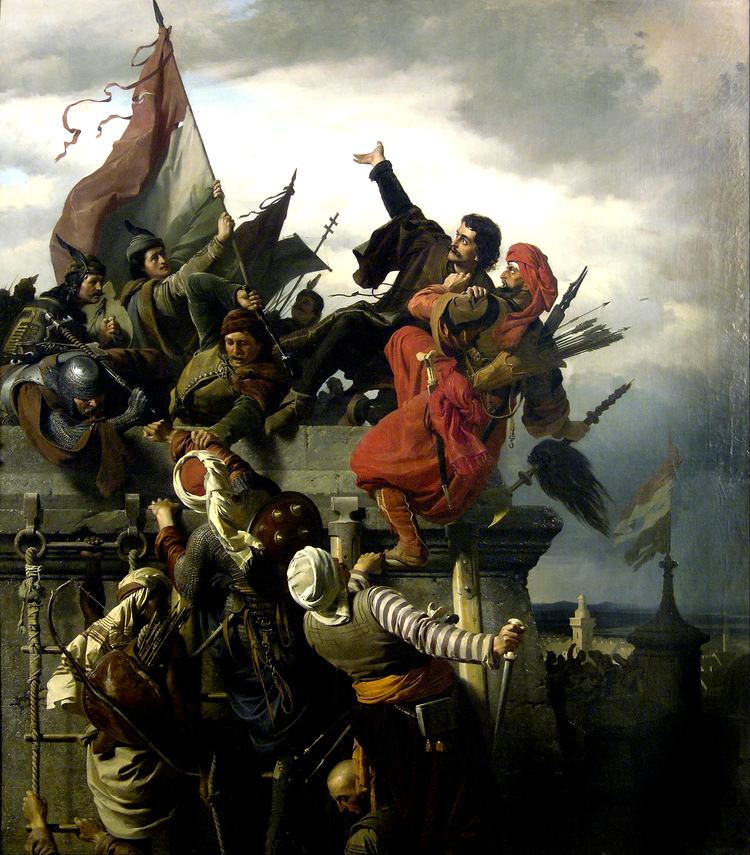Cause of death Self-sacrifice Relatives János Hunyadi | Other names Titus Dugović | |
 | ||
Died 21 July 1456
Siege of Belgrade | ||
Titusz Dugovics or Titus Dugović (Hungarian: Dugovics Titusz; * ? ; † 21 July 1456) was a mythical Hungarian soldier of Croatian or Serbian ethnicity who was stationed during the Siege of Belgrade by the Ottoman Empire's forces in Belgrade. However, the historical truth of his existence is in some doubt, because all known records that describe him are of highly questionable veracity.
Contents
The siege
Nándorfehérvár was at this time under the command of Hunyadi. From 4 to 22 July 1456, Nándorfehérvár was besieged by the Sultan Mehmed II. After ongoing, fierce battles, Ottoman troops attacked the city walls on 21 July, and a Janissary succeeded, according to legend, to climb a turret and momentarily hoist the Ottoman banner. It was immediately overthrown by soldiers in the same moment that Dugovics grabbed the bearer. As a result, both Dugovics and the standard-bearer plunged from the walls to their deaths.
This heroic act was significant in the repulse of the Ottomans and honours the memory of the defenders of Nándorfehérvár.
Fictional person?
In his study, historian Tibor Szőcs claims Titusz Dugovics did not exist. A familiar figure in Hungarian history, Dugovics is the embodiment of anti-Ottoman resistance and self-sacrifice. This heroic deed by him has served as the subject of numerous works of literature and art science the middle of the 19th century, and several streets in Hungary have been named after him.
Nevertheless, an analysis of the available sources proves that the story cannot be considered as historically accurate. The heroic act was first documented in Antonio Bonfini's chronicle written at the end of the 15th century, where an anonymous Hungarian fighter is mentioned. The same story is told by both Bonfini and the Serbian Konstantin Mihailović, in relation to the Siege of Jajce in 1464, featuring an unnamed soldier as well. Early modern-era Czech historical literature by Jan Dubravius also refers to the hero of Belgrade/Nándorfehérvár as being unknown, but defining his nationality as Czech.
From the end of the 18th century, with the forming of Hungarian national consciousness, the valiant soldier had been regarded as a national hero and role model. Imre Dugovics, a member of the Western Hungarian noble family of Croatian origin, took advantage of that. In 1821, by means of three false documents, he attempted to verify that the anonymous fighter had been an ancestor of his family, called Titusz Dugovics. The name was made known to the public by Gábor Döbrentei, a recognised scholar of the period, who had been deceived by the false documents, and published them in study. Thus, Titusz Dugovics and his story soon became (and have ever since remained) a part of Hungarian historical consciousness, although his character should not be considered more than early-19th-century fiction. The only element of the story that may be accepted as authentic is that of the unknown soldier described by Bonfini and Konstantin.
